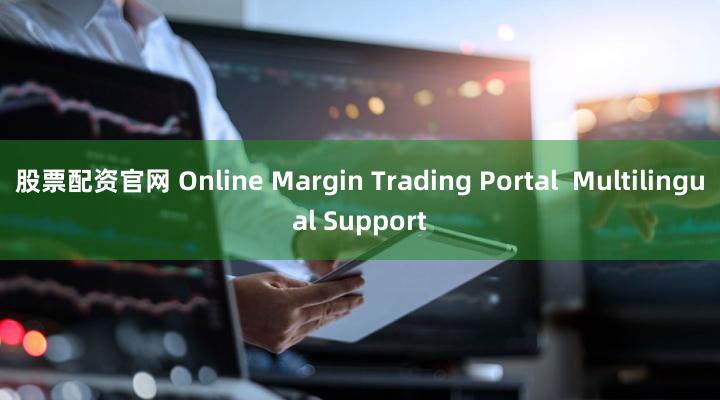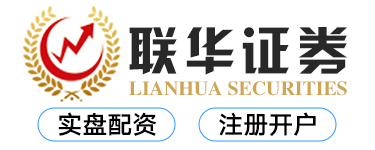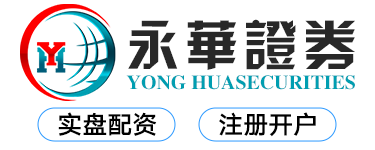
Online Margin Trading Portal: Multilingual Support?
Meta Description: Explore the world of online margin trading portals and discover if they offer multilingual support for a truly global trading experience. Learn about the benefits, challenges, and future of multilingual features in online investment platforms.
Unlocking Global Markets: The Power of Multilingual Support in Online Margin Trading
Whoa, there's a whole world of opportunity out there! For those of us in the financial world, it's not just about local markets anymore. We're talking global reach, connecting with investors across continents, and capitalizing on a truly international marketplace. And that's where the magic of multilingual support in online margin trading portals comes in. Think about it: a platform that seamlessly caters to traders in Japan, Brazil, and Germany, all speaking in their native tongues. It's not merely a convenience; it's a game-changer. It dismantles language barriers, fostering inclusivity and opening doors to a vastly expanded investor base. This isn't just about translating a few buttons; it's about crafting a user experience that respects and resonates with diverse cultures. We're talking culturally sensitive designs, localized financial terminology, and responsive customer service available in multiple languages. Imagine the influx of new clients, the broader perspectives, and the enhanced global competitiveness that this approach unlocks. This isn't just about boosting profits; it's about building a truly global community of traders, a diverse and dynamic ecosystem where everyone feels welcome and understood. The implications are staggering. The potential for growth is exponential. But let's delve deeper, shall we? Let's explore the nuts and bolts, the challenges, and the future of multilingual support in online margin trading.
Online Margin Trading Portal Support: Multilingual Capabilities
The availability of multilingual support on online margin trading portals varies significantly. While some leading platforms boast extensive multilingual capabilities, others remain limited to a few major languages, or English only. This disparity stems from several factors, including the target market, the platform's development resources, and the complexity of translating and localizing financial terminology.
Consider the sheer complexity involved. It鈥檚 not just about translating 鈥淏uy鈥?to 鈥淜aufen鈥?(German) or 鈥淐omprar鈥?(Spanish). Legal disclaimers, risk warnings, and complex financial terms require meticulous accuracy, often necessitating the involvement of legal and financial professionals specializing in each target language. Furthermore, cultural nuances can significantly impact the interpretation of messages. What might be acceptable phrasing in one culture could be offensive or misleading in another.
Many platforms opt for a phased approach, starting with high-demand languages and gradually adding more as their user base diversifies. This strategic approach allows for careful testing and refinement of the multilingual features, minimizing the risk of errors and ensuring a seamless user experience.
Here's a quick overview of the typical approach:
| Phase | Languages Added | Focus | Challenges | |---|---|---|---| | 1 | English, Mandarin, Spanish | High user demand | Translation accuracy, cultural adaptation | | 2 | French, German, Japanese | Expanding global presence | Legal and regulatory compliance, localized payment options | | 3 | Arabic, Portuguese, Russian | Further market penetration | Technical complexities, ensuring consistent user experience across all languages |
The Benefits of Multilingual Support
The advantages of multilingual support on online margin trading portals are undeniable:
- Expanded Market Reach: The obvious benefit is access to a global audience of potential investors. This dramatically increases the platform鈥檚 potential user base and transaction volume.
- Enhanced User Experience: Traders who use the platform in their native language feel more comfortable and confident, leading to improved engagement and satisfaction.
- Increased Trust and Credibility: Offering support in multiple languages demonstrates a commitment to inclusivity and a global perspective, enhancing the platform鈥檚 reputation and building customer trust.
- Improved Customer Service: Multilingual support ensures efficient and effective communication with customers from around the world, reducing response times and improving problem resolution.
- Competitive Advantage: In a crowded marketplace, multilingual support can be a significant differentiator, attracting new users and retaining existing ones.
The Challenges of Implementing Multilingual Support
Despite the numerous benefits, implementing multilingual support is not without its challenges:
- High Development Costs: Translation, localization, and testing of a platform in multiple languages is resource-intensive and can be expensive.
- Technical Complexity: Ensuring seamless integration with existing systems and maintaining consistency across all languages requires specialized technical expertise. 股票配资公司
- Maintaining Accuracy: Financial terminology is notoriously complex, and accurate translation is crucial to avoid misinterpretations and legal issues.
- Cultural Sensitivity: It's paramount to avoid cultural faux pas in marketing materials and user interface elements. Things that are perfectly acceptable in one culture might be badly received in another.
- Ongoing Maintenance: Regular updates and maintenance are needed to keep the translations current and accurate, as languages evolve and new terms emerge.
The Future of Multilingual Support
The future of multilingual support in online margin trading portals is bright. As the world becomes increasingly interconnected, the demand for multilingual platforms will continue to grow. We can expect to see:
- AI-powered translation tools: These tools will enhance the accuracy and efficiency of translations, reducing costs and accelerating the process.
- Increased use of machine learning: Machine learning algorithms will learn from user data to personalize the user experience in different languages, adapting to cultural preferences and usage patterns.
- More sophisticated localization strategies: Platforms will move beyond simple translation to incorporate culturally sensitive design elements, marketing materials and user interface customization.
- Greater accessibility for users with disabilities: Multilingual platforms will prioritize accessibility, ensuring that users with visual or auditory impairments can easily navigate and use the platform.
Frequently Asked Questions (FAQs)
Q1: Does multilingual support impact the security of the platform?
A1: No, properly implemented multilingual features should not compromise the security of the platform. Security protocols and encryption remain independent of language support.
Q2: How much does it cost to add multilingual support to an existing platform?
A2: The cost varies widely depending on the number of languages, the complexity of the platform, and the level of localization required. It can range from thousands to hundreds of thousands of dollars.
Q3: What languages are most commonly supported?
A3: English, Mandarin, Spanish, French, German, Japanese, and Arabic are among the most frequently supported languages due to their widespread use and large potential user bases.
Q4: How can I tell if a platform鈥檚 multilingual support is good?
A4: Look for accurate translations, culturally appropriate content, and responsive customer support in multiple languages. Check user reviews to see what other users have experienced.
Q5: Are there any legal considerations for multilingual support?
A5: Yes, legal and regulatory compliance is critical. Translations of legal disclaimers, risk warnings, and other important documents must be precise and adhere to local laws and regulations.
Q6: What is the future of AI in multilingual support in this industry?
A6: AI is poised to revolutionize multilingual support. We'll see more sophisticated machine translation, personalized user experiences, and automated customer support in multiple languages.
Conclusion
The integration of multilingual support in online margin trading portals is no longer a luxury, but a necessity for success in today's globalized financial markets. While challenges exist, the benefits鈥攆rom expanded market reach to enhanced user experience鈥攆ar outweigh the costs. As technology advances and the demand for global access intensifies, we can anticipate even more sophisticated and inclusive digital trading environments, breaking down language barriers and connecting investors from around the world. The future of online trading is multilingual, and embracing this reality is key to unlocking the full potential of the global investment landscape.
文章为作者独立观点,不代表财盛证券观点






